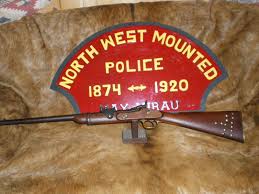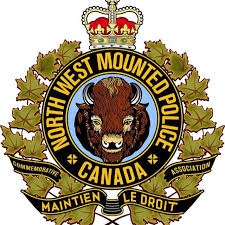Part 1 Continued from 1920.
It (Herschel) is nearly two thousand miles from civilization, but it is only one of many similar desolate police stations in the wilderness of the great Northland.
The men of this remarkable police force, perhaps the most famous body in the British Empire, have been the very backbone of strength in the building up of Western Canada. They have gone ahead of the settler, in advance of the railway and the surveyor, and they have made their uniform respected and feared in a territory that stretches a thousand miles east and west and eighteen hundred miles north and south. Although numbering under eight hundred strong, they have done the work of an army. A cattle thief two hundred miles away from the nearest officers fears the law as acutely as the city lawbreaker who works in the very presence of the police.
“There is a white man who is selling liquor to the Indians,” said the Inspector at Fort McPherson to one of his men. “He is down on the Indian Hare River, three hundred miles from here. Go and get him.”
The officer went. He travelled eight hundred miles for his man, and “he got him.” The assignment was no more unusual to this dollar-a-day hero of the Royal Mounted than it would be for a city policeman to be detailed to arrest a man in the next street. In 1917 the 797 men who comprised the force made 14,277 arrests, and convictions resulted in 11,657 cases.
Their wonderful work can hardly be appreciated until one pauses to realize that this entire force, which patrolled a territory half the size of Europe, is no bigger than the police force of a city like Toronto. The Athabasca and Mackenzie River district, for instance, is patrolled by three officers and twenty-five men, yet it comprises an area of 620,000 square miles- slightly less than a twelfth of the North American continent, about a fifth of the whole of Canada, and some five times as large as the United Kingdom. Nevertheless, no lawbreaker is safe in the whole of this vast country, for once set upon a trail a man-hunter of the Royal Mounted is a veritable Nemesis.

From six months to a year is the time allowed for a “rookie,” or novice, to prove himself. After that first year he becomes either a “reliable” of the Royal Mounted or a “discard.” In the fifth month of his service a young, smooth-faced “rookie” cornered three desperate cattle thieves in the Cypress Hills, east of Lethbridge, fought them to a standstill, and brought them into headquarters single-handed, one of them almost dead of his wounds. A little over a year later, this same “rookie,” whose name was Barry, was sent out after a man-killer with those words which are epic in the annals of the Royal Mounted: “Don’t come back until you get him.” He got his man, but he was away seven months and he travelled over two thousand miles.
This is the type of man of which the Royal Mounted is made up, so it is not so strange, after all, that eight hundred such characters should be able to do the work of ten thousand ordinary men. In a way the Royal North-West Mounted Police is a misnomer. It is not all “mounted,” as most people suppose. In the entire service there are only 640 horses and nearly all these are to be found at the posts in the Prairie Provinces.
An inspector stationed very close to the Arctic Circle once suggested to me that it ought to be called “The Royal Mounted, Dog-Sledge, Snow shoe and Canoe Police of the North-West.” That name would just about hit the nail on the head, though the writer, instead of saying “Police of the North-West,” would suggest “Police and Explorers of the North-West.” For it must be conceded that it is something of importance to “discover” a sixth of a continent, to reveal untold millions of new potential wealth, and to add lakes and rivers and even mountains to maps that were naked spaces less than a decade ago. There is something in this of deeper import than the “discovery” of a Pole, whether at one end of the earth or the other.
To Be Continued (TBC)
